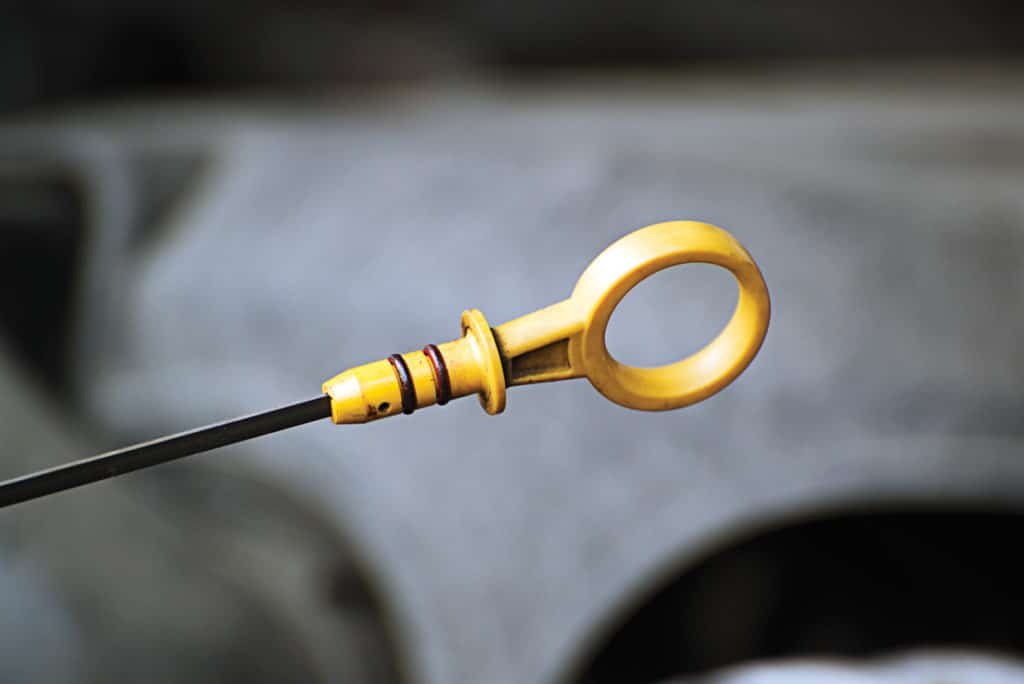
The first line of defense is the dipstick. Some dipstick tubes seal with O-rings, and until that seal is broken the oil may remain higher in the tube than in the oil pan. So pull it, wipe it, and then do it again to be sure of reading an accurate oil level. Capt. Vincent Daniello
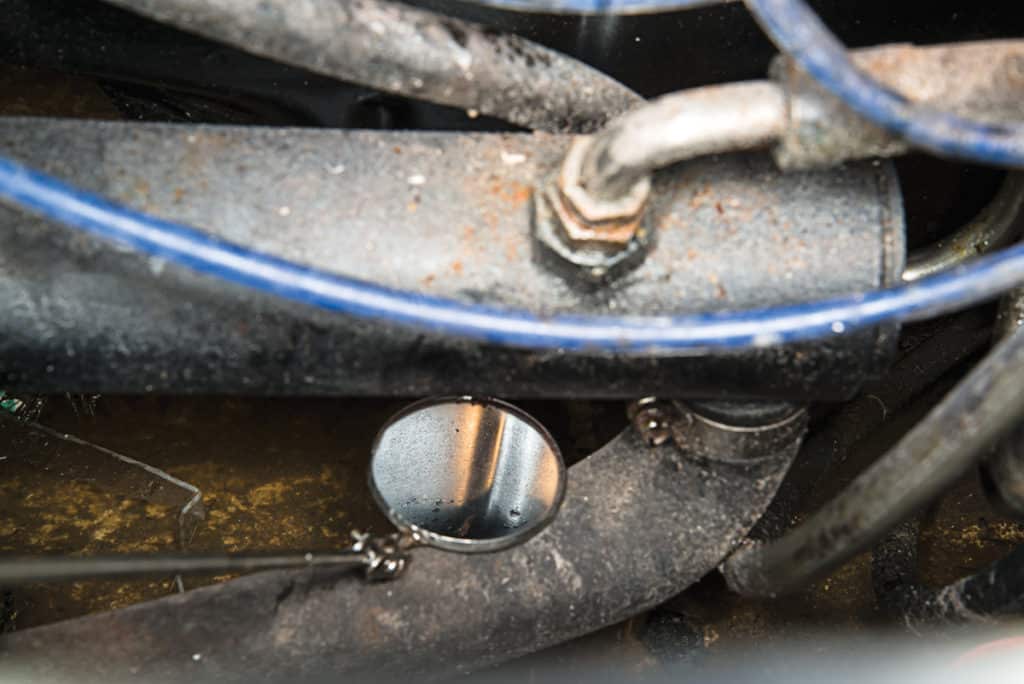
Wheeler suggests eyeballing the bottom of the engine with an inspection mirror and a flashlight. If rust is present, “get at it” with sandpaper, wipe clean, and apply Rust-Oleum paint with a brush or a 2-inch paint roller. Capt. Vincent Daniello
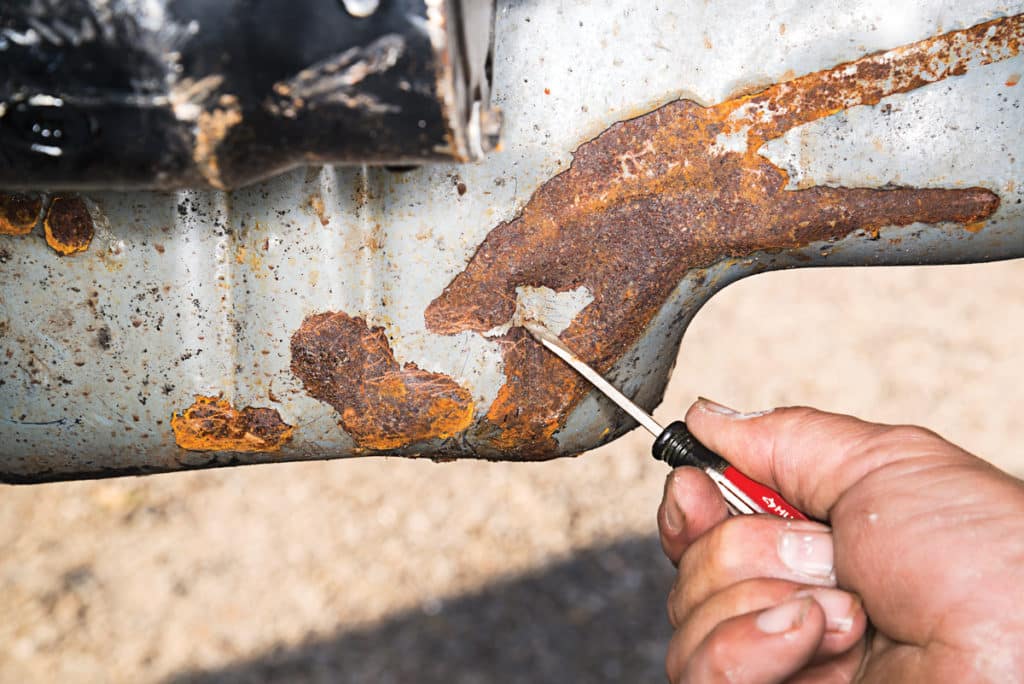
MerCruiser warns to replace oil pans once the depth of pits approaches 10 percent of metal thickness. Dig at rust with a screwdriver. Sound metal won’t give way to hand pressure. If you make a hole, you just saved yourself from engine failure. Capt. Vincent Daniello
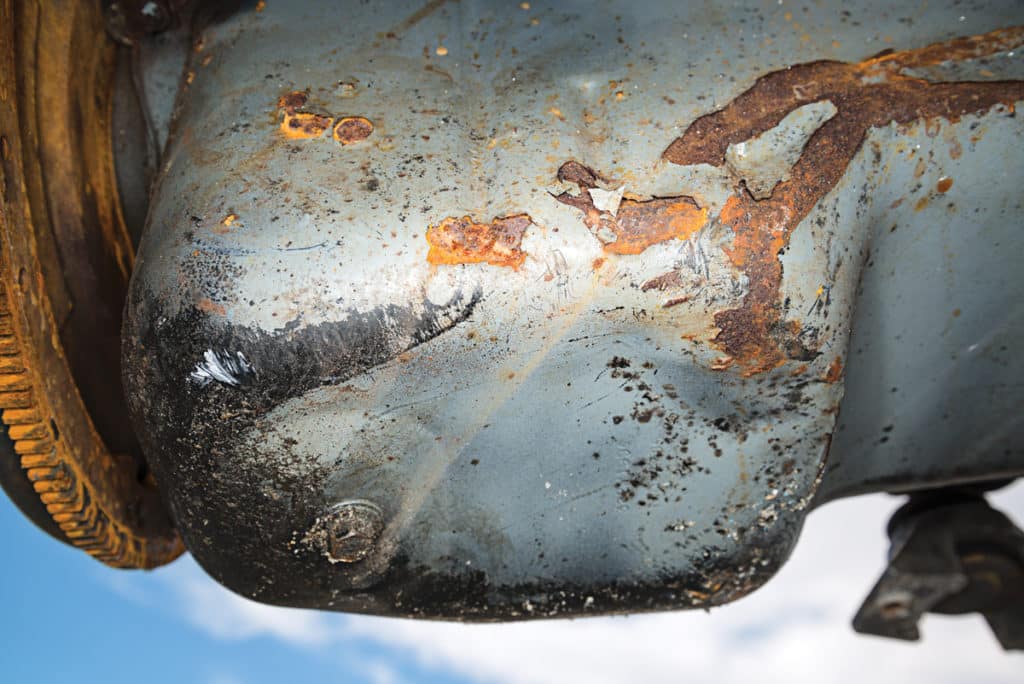
One DIY method for changing an oil pan involves spanning the beam of the boat with a 6-by-6-inch timber, lifting the engine with a chain fall, and then inserting blocking between the engine mounts and stringers. Capt. Vincent Daniello
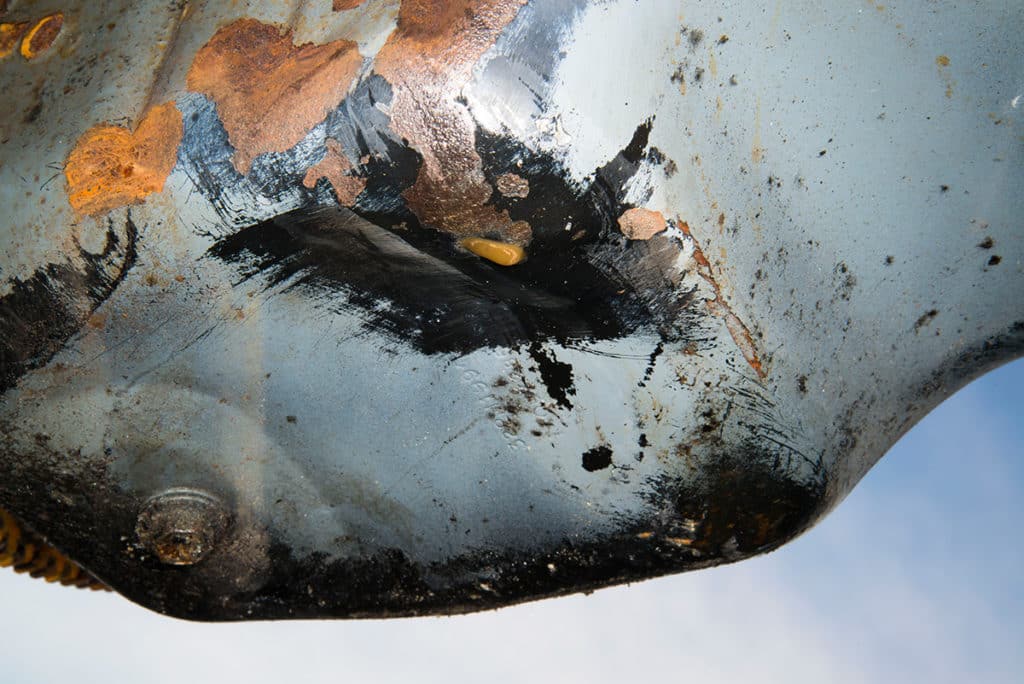
Aluminum oil pans — now standard on many engines and available as aftermarket replacements for most — won’t rust, but do corrode. Aluminum oil pans are thicker than steel pans, but painting aluminum is trickier. Capt. Vincent Daniello
If bilge water rusts your engine’s steel oil pan and it leaks until the low-oil-pressure alarm sounds, you’ll have just seconds to react. If you don’t, “you might notice the engine hesitate,” says Michael Wheeler of HHB Marine Services in Hampton, New Hampshire. “Then the main bearings usually go first, and the pistons dig into the insides of the cylinders and the engine seizes.” Help yourself avoid that scenario with these tips.
Tip: Milky, beige-colored oil is a sign water is getting where it shouldn’t. Also, watch for oily rainbows in the bilge water. Most leaks start as small drips.
Click here to learn more about the extremes to which a marine engine’s oil and lubrication system are put through in use.
Advertisement









